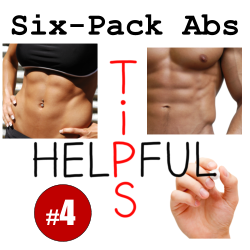Getting Started with HIIT – High Intensity Interval Training
Interval training means alternating between intensity levels. You generally alternate between low and medium to high intensity. High Intensity Interval Training, or HIIT for short, leaves no room for anything less than your maximum effort.
But what is your maximum effort?
Maximum effort can be measured a number of ways. One simple method is to first identify your maximum heart rate. There are charts that you can use which take other elements into consideration, however you can also find a general range by subtracting your age from 220.
For example, if you’re 40 years old then your maximum heart rate should be 180 beats per minute. With HIIT the goal is to hit about 95% of your maximum heart rate. Continuing with the example of a 40 year old person then 95% of 180 is 171 beats per minute.
Now a normal resting heart rate is generally around 60 beats per minute. So if you’re almost tripling the heart rate then you can image what it feels like. The good news is that this intensity level only lasts for a minute or less.Then you get to rest.
The maximum heart rate method is only effective if you’re performing a cardio workout and if you have a heart rate monitor. If you’re training in sit-ups or pushups then your heart rate doesn’t apply. Instead, you’re performing the movement as fast as you can until your time is up. In twenty seconds you might get 20 sit-ups or 15 pushups if you’re very well trained. In subsequent rounds the number of sit-ups or pushups is likely to decrease as your body fatigues.
So you can use heart rate to estimate intensity. You can also perform a maximum number of reps in a specific amount of time, 20 seconds for example. You can also estimate your intensity level by simply exercising as hard as you can for the duration.
Here’s an interesting tidbit for you, in studies, women tend to be better able to work out at a higher intensity for a short duration than men, based on measurements of their cardiac output and VO2 Max.
Warm Up Before Getting Started with HIIT
It’s important to identify a means for measuring your effort. There’s no right or wrong method and the method you choose may very well depend on the type of HIIT program you choose. Before we talk about creating your HIIT program, let’s discuss the importance of warming up before you work out.
HIIT isn’t something you just get up off of the couch and do. Warming up is essential for proper form, recovery, and to prevent injuries. Your warm up will depend on your chosen program. For example, if you’re going to do a squat Tabata then you might warm up by jogging a quarter mile and then performing 20-30 slow and deep squats. You want to thoroughly warm up the muscles that you’re going to be using.
If you’re going to do a rowing HIIT workout then you might row a slow 250-meter row followed by 20 squats. Then you’d row a medium intensity 250-meter row followed by 10 squats. You’d finish it up with a hard 250 meters at about 75-80% of your maximum effort. Then it’d be time to begin your workout. Your muscles would likely be sufficiently warm.
Skipping this step can result in injury. Remember, when you’re warming up you’re not just warming up your leg or arm muscles. You’re also warming up your heart and lungs and preparing them for your workout. Work out for at least three minutes before any HIIT workout and make sure you feel mentally and physically ready to begin.
Creating Your HIIT Program
High Intensity Interval Training isn’t something you do every day. Most experts recommend performing this type of workout just three times a week. There are different approaches depending on your fitness level, your current fitness program, and whether you’re starting a new fitness program or integrating HIIT into your existing program.
HIIT for Beginners
If you’re new to exercise and fitness or beginning a new fitness program, then you may want to begin with just one HIIT workout each week. You can then gradually increase the number of workouts depending on how your body is feeling.
For example, let’s say you decide that you’re going to start running. Generally, you’ll probably run three to four times each week. One of those weekly workouts would be a HIIT workout. The others would be running for time or distance at a moderate or low intensity level.
What you’ll find with this type of approach is that your running fitness progresses more quickly. Someone who is beginning a running program and doesn’t include a HIIT workout or two each week will not likely reach their running goals as quickly. With HIIT you might hit your goal of being able to run a 5k at eight-minute mile pace in a few months. It might take another beginner runner a full year or more to reach this milestone.
Sticking with running for a minute, in addition to performing a HIIT running workout, you can also perform other strength training workouts for runners. Lunges, squats, and box jumps are all exceptional workouts to consider. You can do these in Tabata format, which is 20 seconds of work followed by ten seconds of rest. The work rounds are repeated eight times, which equates to four very intense minutes of exercise.
Integrating HIIT into Your Existing Fitness Program
If you’ve been working out for a while and you have reached a plateau in either your fitness or weight loss, then HIIT can help. Without changing your movements, you can integrate a Tabata or interval type plan into your existing program.
Let’s take cycling as an example. If you’re an avid cyclist, either stationary or on the road, you might ride as hard and fast as you can for 20 or 30 seconds. Decrease the resistance on your bike and increase your repetitions to increase the intensity. You should feel like you can’t possibly continue. If you have a heart rate monitor then go ahead and shoot for that 90-95% of your maximum heart rte.
Remaining on your bike, you’ll then ride at a slower intensity for 90 seconds. You should be able to regain your relaxed breathing by the end of those 90 seconds. Kick it back into gear and ride at a high intensity for another 30 seconds. Recover and repeat. You’re done when you’ve repeated the cycle 8 times.
Whether you run, cycle, row or you love the elliptical at the gym, you can easily apply HIIT to your existing fitness program.
However, you may want to mix it up to stay motivated, engaged, and to strengthen the foundation movements for any given exercise. For example, in order to run faster and longer you need strong hip and gluteal muscles. Squats and lunges are two of the best exercises for improving the strength of those muscles. You can integrate a squat Tabata into your regular fitness routine.
You might run at a moderate pace and distance for three days. One day you perform interval runs and one day each week you do a Tabata squat routine. You’ll undoubtedly notice the difference in your strength and speed after just a few weeks of HIIT.
If you’re not interested in starting a regular fitness program, but would rather try a wide variety of exercise routines, consider creating your own HIIT program.
For example, on Monday you might run 400-meter sprints followed by a rest that is exactly as long as it took you to run 400 meters. If it takes you two minutes to run 400 meters, then you rest for exactly two minutes before running another 400. The next day you might perform a sit-up Tabata followed by a pull-up Tabata on the third day. You’d then take two days off.
On your first day back you might do a push-up Tabata followed by a rowing workout and so on. If you take this approach you’ll probably want to plan your week’s workouts in advance so you don’t have to try and figure out what you’re going to do each day.
Remember to warm up before you work out and to cool down too. The cool down may be as simple as walking for a quarter mile. Let your heart rate and breathing return to normal.
We’ve talked a lot about the different approaches to High Intensity Interval training. Let’s take a look at a few different sample training programs. You can use these programs as they’re written or to help you design your own.
Sample Treadmill HIIT Program
Warm up before you start.
Monday, Wednesday, Friday – Run for 30 seconds at 90-95% your maximum heart rate or as fast and hard as you can run. Rest for 30 seconds. Stop the treadmill and stand or sit. Repeat this process 10 times. If you’re new to HIIT you might rest for 60 or even 90 seconds between each 30-second run.
Tuesday – Rest day.
Thursday – Spot focus. Tabata sit-ups or Tabata push-ups. 20 seconds maximum effort, 10 second rest repeated for eight cycles.
Saturday – Spot focus. Tabata push-ups, squats, or jump rope.
Sunday – Rest day.
The Treadmill HIIT can be changed to be a stationary cycle, elliptical, or rowing machine.
Sample Strength Training HIIT Program
Warm up before you start.
Monday – With a heavy dumbbell in each hand, for example 40 pounds, perform 20 lunges on each side. Rest for three minutes between each round and then repeat four times.
Tuesday – Squat Tabata (you can also back squat, front squat, or overhead squat with a heavy bar 20 reps with a 3 minute rest in between each round). Repeat five times.
Wednesday – Rest day.
Thursday – Rest day.
Friday – 20 seconds of burpees followed by 10 seconds of rest. Repeat for eight cycles.
Saturday – Pull-ups or push-ups Tabata.
Sunday – Deadlift 20 reps followed by a 250-meter row (or run or cycle). Repeat 5 times.
As you can see, any exercise or fitness program can be easily adapted to include HIIT workouts. Whether you hula-hoop, prefer endurance exercise, or enjoy the gym fitness equipment you can get better results by including a few High Intensity Interval Training workouts each week. Before you get started with HIIT, let’s take a look at “Tips for HIIT Success” for some final tips to help you achieve a positive outcome.





